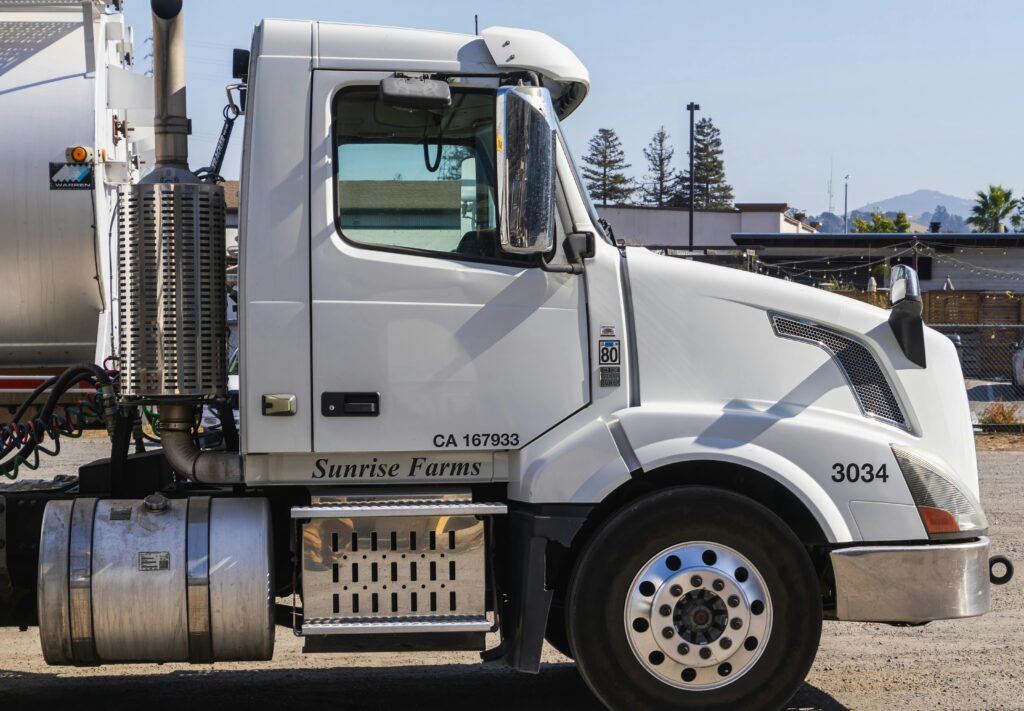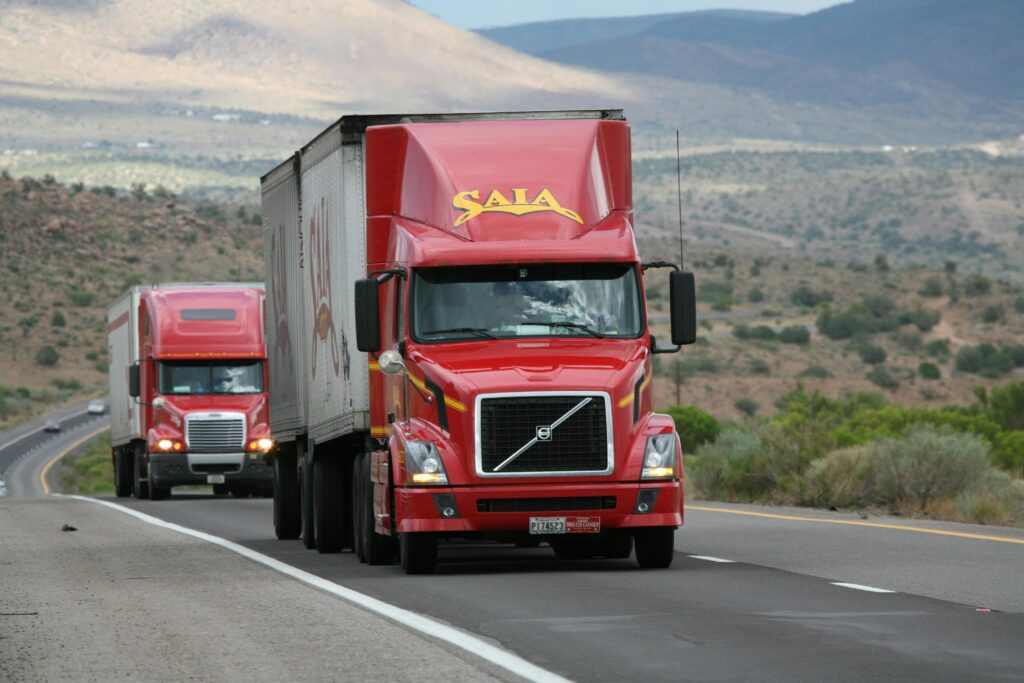Tractor trailers, typically have a width ranging from 8 to 8.5 feet (2.4 to 2.6 meters). However, in some cases, specialized trailers or regulations may vary this width slightly. These dimensions are crucial for ensuring safe passage on roads and highways while accommodating the large cargo capacity of these vehicles.
Introduction
Tractor-trailers, also known as semi-trucks or big rigs, are an integral part of the transportation industry, responsible for hauling goods across vast distances. These massive vehicles are a common sight on highways and roads, but many people may not be aware of their exact dimensions, particularly their width. Understanding the width of tractor-trailers is crucial for various reasons, including safety, route planning, and infrastructure design. In this article, we’ll delve into the intricacies of tractor-trailer dimensions, focusing specifically on their width, and explore the factors that influence it.
Standard Tractor-Trailer Width
Legal Limits
In the United States, the width of tractor-trailers is governed by federal and state regulations to ensure the safe and efficient movement of commercial vehicles on public roads. According to the Federal Highway Administration (FHWA), the maximum legal width for tractor-trailers on the National Network of highways is 102 inches (8.5 feet or 2.6 meters).
This standard width applies to the overall width of the vehicle, including the body, load, and any accessories or equipment attached to it. It’s important to note that some states may have more stringent regulations, further limiting the maximum allowable width for tractor-trailers operating within their boundaries.

Typical Dimensions
While the legal limit sets the maximum width, most tractor-trailers are designed and manufactured to be slightly narrower than the limit to account for potential variations and clearances. The typical width of a standard tractor-trailer ranges from 96 to 102 inches (8 to 8.5 feet or 2.4 to 2.6 meters).
| Component | Width Range |
|---|---|
| Tractor | 96 – 102 inches (2.4 – 2.6 meters) |
| Trailer | 96 – 102 inches (2.4 – 2.6 meters) |
It’s important to note that these dimensions can vary slightly depending on the manufacturer, model, and specific configuration of the tractor-trailer.
Factors Influencing Tractor-Trailer Width
Trailer Type
The width of a tractor-trailer can vary depending on the type of trailer being used. Some common trailer types and their typical widths are:
| Trailer Type | Typical Width |
|---|---|
| Dry Van | 96 – 102 inches (2.4 – 2.6 meters) |
| Flatbed | 96 – 102 inches (2.4 – 2.6 meters) |
| Tanker | 96 – 102 inches (2.4 – 2.6 meters) |
| Lowboy | 96 – 102 inches (2.4 – 2.6 meters) |
| Specialized | May exceed standard widths |
Specialized trailers, such as those used for hauling oversized or overweight loads, may exceed the standard width limits and require special permits or escorts.
Load Type and Configuration
The type of cargo being transported and how it is loaded can also influence the overall width of a tractor-trailer. For example, loads that protrude beyond the trailer’s sides or require additional equipment or securement devices may increase the effective width of the vehicle.

Wide Loads
In some cases, the cargo itself may exceed the legal width limits, requiring the use of specialized equipment and permits for transporting “wide loads.” These loads may include prefabricated buildings, large machinery, or oversized construction materials.
Regulatory Exemptions
While the standard width limits are strictly enforced for most tractor-trailers, certain exceptions and exemptions may apply in specific circumstances. For example, some states may allow wider loads for certain agricultural or construction vehicles operating within their boundaries or on designated routes.
Safety Considerations and Implications
Clearance and Maneuverability
The width of a tractor-trailer plays a crucial role in its ability to navigate roads, intersections, and infrastructure safely. Wider vehicles require more clearance when passing through narrow spaces, such as tunnels, bridges, or construction zones. Additionally, wider tractor-trailers may have reduced maneuverability, making it more challenging to navigate tight turns or lane changes.
Visibility and Blind Spots
The width of a tractor-trailer can also impact visibility and create blind spots for both the driver and other road users. Wider vehicles may obstruct the driver’s line of sight, making it more difficult to detect pedestrians, cyclists, or other vehicles in adjacent lanes or at intersections.
Infrastructure Design
The dimensions of tractor-trailers, including their width, are crucial considerations in the design and construction of roads, highways, and other transportation infrastructure. Lanes, shoulders, and clearances must be designed to accommodate the safe passage of these vehicles, taking into account their width and potential wide loads.

Compliance and Enforcement
Regulations and Permits
Tractor-trailer operators must comply with federal and state regulations regarding vehicle dimensions, including width limits. Failure to adhere to these regulations can result in fines, citations, or the requirement to obtain special permits for oversized or overweight loads.
Wide Load Permits
In cases where a tractor-trailer’s load exceeds the legal width limits, operators must obtain wide load permits from the appropriate authorities. These permits may specify designated routes, travel times, and additional safety requirements, such as escorts or warning flags.
Inspection and Enforcement
Law enforcement agencies and transportation authorities conduct regular inspections and enforcement activities to ensure compliance with vehicle dimension regulations. This includes weighing and measuring tractor-trailers at designated inspection stations or during routine traffic stops.
Future Considerations and Innovations
Autonomous and Connected Vehicles
The advent of autonomous and connected vehicle technologies may impact the width requirements and regulations for tractor-trailers in the future. Advanced driver assistance systems, vehicle-to-vehicle communication, and platooning technologies could potentially allow for more precise maneuvering and closer spacing between vehicles, potentially influencing width requirements.
Alternative Fuel and Electric Vehicles
As the transportation industry shifts towards alternative fuels and electric powertrains, the design and configuration of tractor-trailers may evolve. This could potentially impact their overall dimensions, including width, as manufacturers adapt to new technologies and packaging requirements.
Modular and Reconfigurable Trailers
Innovations in trailer design, such as modular or reconfigurable trailers, could also influence the width requirements of tractor-trailers. These trailers may have the ability to adjust their width or configuration based on the specific load or transportation needs, potentially providing more flexibility and efficiency.
Tractor-Trailer Width in Other Countries
While this article primarily focuses on the regulations and standards in the United States, it’s important to note that tractor-trailer width limits can vary across different countries and regions. Here are some examples:
European Union
In the European Union, the maximum legal width for tractor-trailers is generally 2.55 meters (approximately 8.4 feet or 100 inches). However, some countries within the EU may have slightly different regulations or exemptions for certain vehicle types or routes.
Canada
In Canada, the maximum legal width for tractor-trailers is 2.6 meters (approximately 8.5 feet or 102 inches), similar to the United States. However, provincial and territorial regulations may impose additional restrictions or requirements.
Australia
In Australia, the maximum legal width for tractor-trailers is generally 2.5 meters (approximately 8.2 feet or 98 inches). However, some states and territories may allow wider vehicles under specific conditions or with appropriate permits.
It’s essential for operators and drivers to familiarize themselves with the specific regulations and requirements of the regions or countries in which they plan to operate.
Oversized Load Trailers
For loads that exceed the standard width limits, specialized oversized load trailers may be used. These trailers can be designed to accommodate wider loads and may feature additional axles, specialized suspension systems, or adjustable configurations to ensure safe and stable transportation.
Wide Load Escorts
When transporting wide loads that exceed the legal width limits, it is often required to have escort vehicles accompanying the tractor-trailer. These escort vehicles typically travel in front and/or behind the wide load, providing warning to other motorists and assisting with navigating narrow passages or intersections.
Conclusion
Understanding the width of tractor-trailers is crucial for ensuring safe and efficient transportation operations. The standard legal width limit of 102 inches (8.5 feet or 2.6 meters) in the United States provides a framework for manufacturers, operators, and infrastructure designers to work within. However, various factors, such as trailer type, load configuration, and regulatory exemptions, can influence the actual width of a tractor-trailer.
Safety considerations, including clearance, maneuverability, visibility, and infrastructure design, underscore the importance of adhering to width regulations and properly accommodating these large vehicles on our roads and highways.
As technology and transportation evolve, the width requirements and regulations for tractor-trailers may also adapt to accommodate new innovations and advancements in areas such as autonomous vehicles, alternative fuels, and modular trailer designs.
By understanding the nuances of tractor-trailer width and staying informed about regulatory changes and industry trends, stakeholders can work towards optimizing transportation operations while prioritizing safety and efficiency on our roads.
FAQs
- What is the maximum legal width for tractor-trailers in the United States? The maximum legal width for tractor-trailers on the National Network of highways in the United States is 102 inches (8.5 feet or 2.6 meters).
- Can tractor-trailers exceed the standard width limits? In certain circumstances, tractor-trailers may be allowed to exceed the standard width limits, such as when transporting oversized or overweight loads. However, this typically requires obtaining special permits and following designated routes and safety protocols.
- How does the width of a tractor-trailer affect safety and maneuverability? Wider tractor-trailers require more clearance when navigating narrow spaces, intersections, and infrastructure. They may also have reduced maneuverability and create larger blind spots for drivers, potentially increasing the risk of accidents or incidents.
- Are there differences in width between different types of trailers? Yes, the width of a tractor-trailer can vary depending on the type of trailer being used. For example, specialized trailers for hauling oversized or overweight loads may exceed the standard width limits, while common trailer types like dry vans, flatbeds, and tankers typically fall within the standard range.
- How are tractor-trailer width regulations enforced? Law enforcement agencies and transportation authorities conduct regular inspections and enforcement activities to ensure compliance with vehicle dimension regulations, including width limits. This can involve weighing and measuring tractor-trailers at inspection stations or during routine traffic stops. Violations may result in fines, citations, or the requirement to obtain special permits.

